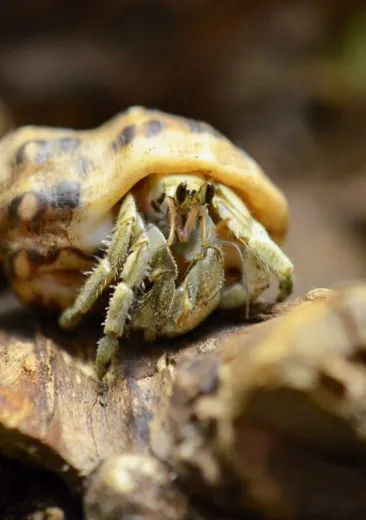Where is the animal to be found?
The small squat shrimp is a cleaner shrimp that lives near the anemones in which it takes refuge at the slightest sign of danger
It is native to Florida, the Bahamas and the Caribbean, but is also found throughout the Indo-Pacific region.
It lives at shallow depths, ranging from one to a maximum of thirty metres, most often in the shelter of the tentacles of anemones in which it takes refuge at the slightest sign of danger.
The squat shrimp lives in small groups of 6 to 8 individuals around the same anemone
How can it be recognised?
The squat shrimp is sometimes confused with the peacock-tail anemone shrimp Periclimes brevicarpali, which is another species found in anemones and differs only by its colour.
The squat shrimp is recognised by its upright abdomen that moves in a rocking motion. Its grey-brown body has white patches and white spots on the sides and tail.
What is distinctive about it?
Shrimp are hermaphroditic, i.e. they have both male and female organs.
As they grow, they often moult to replace their chitin shells. This organic substance, which makes up the shell of shrimp and crustaceans in general, has inspired researchers at the Wyss Institute. By copying its properties and constituents, they designed shrilk, which is a form of inexpensive and biodegradable plastic or bio-textile.
Chitin is used in applications such as cosmetics, dietetics, cholesterol treatments, burns and bone implants. In surgical applications, the strength and flexibility of chitin makes it particularly suitable for use in surgical sutures.
Its organic substance, which makes up the shrimp's shell, is also used in wastewater treatment plants to filter wastewater, as it helps to bind organic elements that are in suspension.










